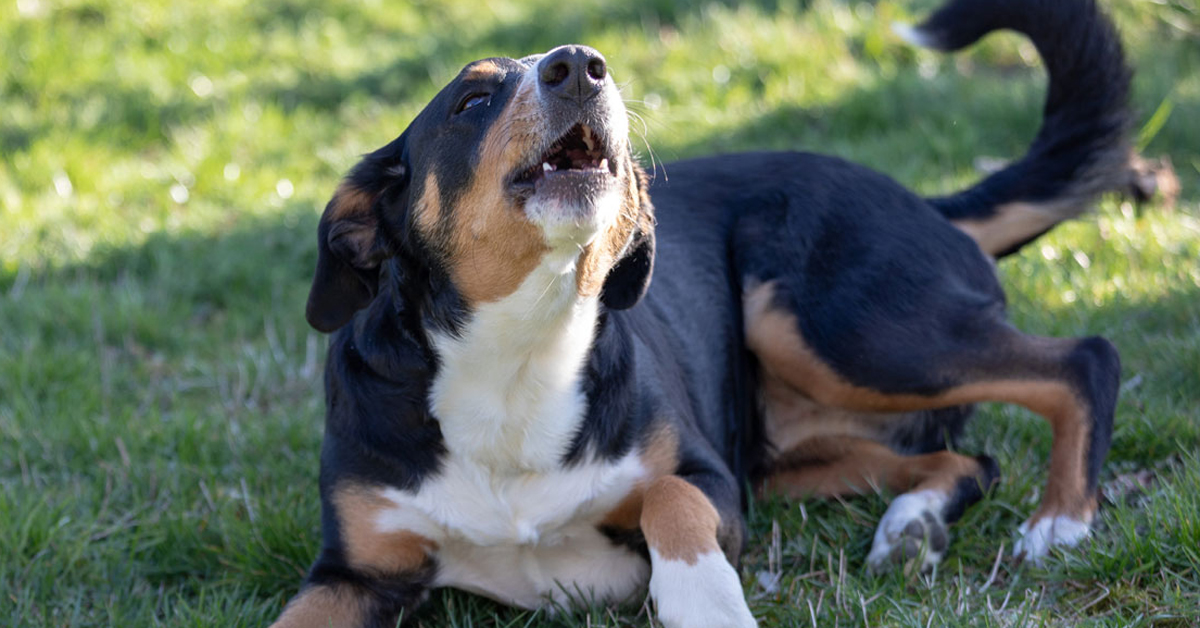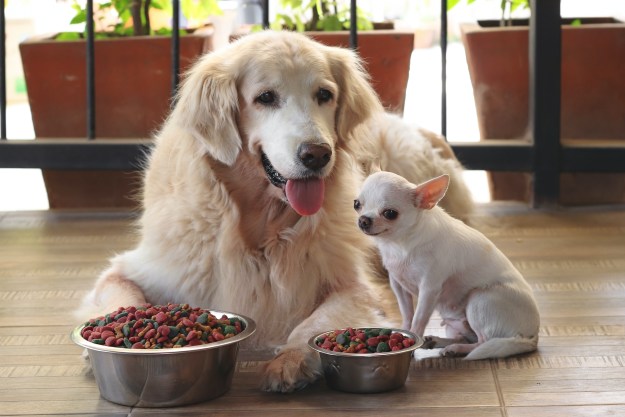Barking is one way our dogs communicate with us. It’s how they let us know they need to go out or that there’s a squirrel in the yard. That’s all part of living with dogs. It’s when the barking doesn’t stop that problems arise. Excessive barking isn’t just stressful for pet parents — it often tops the list of neighborhood complaints. With positive-reinforcement training, dogs can be disciplined to stop inappropriate barking.
Remember, the longer your dog has engaged in inappropriate barking, the longer it will take to solve the problem. Shouting at your dog will make matters worse. Quick fixes like anti-bark collars are punishment devices and never recommended by humane societies. Instead, with consistency and reinforcement and everyone in the household working together, you’ll start to see positive results.

Solve some common barking problems:
Barking at the door
Practice these steps several times a day for a few minutes at a time:
- Step 1: Begin by telling your dog to “sit and stay” around the house, including by the door when there’s nobody outside.
- Step 2: Ask a helper to stand outside and ring the doorbell at different intervals. As soon as the bell rings, give your dog a treat. It doesn’t matter if he barks; give him a treat anyway. The goal at this point is for your dog to associate the sound of the bell with a reward.
- Step 3: Add a sit command. When the doorbell rings, tell the dog to sit before giving him a treat. You can progress to telling him to go to his bed at the sound of the bell.
The end goal is that at the sound of the doorbell, instead of barking, your dog will run to his bed and wait for a treat. It could take a few weeks or longer for your dog to stop barking at the door.
Territorial barking
Territorial barking includes barking at the mail carrier or passersby or dogs or people in a neighboring yard. Here’s what you can do about it:
- Start by teaching your dog a “quiet” command. When he starts to bark at a passerby, allow a few barks, then say, “Quiet” and redirect his attention. One way of doing this is to use a stop-barking spray. For example, Pet Corrector spray emits a harmless hiss of air to interrupt the barking. The second the barking stops, say, “Good quiet” and give a treat. If your dog is afraid of the hissing sound, try a different distraction like throwing a favorite toy. There’s no place for fear in training.
- When you’re not home to work with your dog, don’t allow him access to windows where he can continue territorial barking uninterrupted.
Attention-seeking barking
If your dog barks constantly to get your attention, just ignore him. Telling him to stop or even looking in his direction will reward the behavior. Wait for your dog to stop barking — even if just for a second to catch his breath — and give him a favorite treat. Keep repeating this. Eventually, he will learn that being quiet earns a reward.
Confinement barking
Dogs should never be crated for long periods. However, crates can be really useful for housebreaking or to keep young dogs safe when they can’t be supervised. If your dog barks when put in a crate or gated off in a room, just turn your back on him. The second there’s a pause in the barking, turn around and give a treat. Start by rewarding him for a few seconds of quiet time and slowly work up to calling for longer periods of quiet.
Barking due to boredom or loneliness
Dogs are pack animals. When left alone for long periods, they often bark out of boredom or loneliness. Here’s how to resolve this type of barking:
- Make sure your dog is walked morning and evening.
- Consider hiring a dog walker to exercise your dog during the day or enroll him in doggy day care.
- Provide puzzle toys or toys with compartments for hiding peanuts or treats to occupy your dog when he’s home alone.
- Chew toys also keep dogs busy. Veterinary professionals caution that rawhides pose a choking hazard and should not be given to dogs when unsupervised.
It’s a good idea to consult with a trainer or veterinary specialist about safe chew or puzzle toys that you can leave for your dog when home alone.
Fear and anxiety barking
Sometimes dogs bark out of fear of loud noises such as thunder or fireworks. Here are ways to make your dog feel safer when noise is the issue:
- Put your dog in a comfortable area in a basement or windowless bathroom.
- Leave a television or radio on to mute the loud noise from outside.
- Some dogs respond well to a ThunderShirt. These shirts are designed to apply gentle, constant pressure to help calm anxiety or fear.
Dogs suffering from severe separation anxiety may need intervention from a veterinary behaviorist. Sometimes anti-anxiety medication is required to help these dogs relax when alone.
Remember, positive reinforcement training takes time and patience. If after weeks of training your dog is still barking and you’re getting frustrated, it’s time to enlist the help of a certified professional dog trainer. A positive-motivation trainer can help you and your dog get back on track, and before long you’ll be enjoying a peaceful and happy life together — definitely a quieter one.
Want to learn more? Check out our guide on dog DNA tests.
Editors' Recommendations
- 5 surefire ways to keep your dog off your bed and get a good night’s sleep
- Video: This family dog is the world’s best babysitter
- Funny dog video: Pup has an adorable reaction to a superhero pet on TV
- 4 effective ways to house-train your stubborn little Chihuahua
- Science says dogs cry tears of happiness when reunited with their humans




